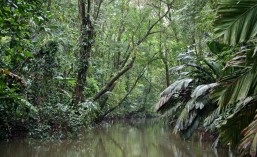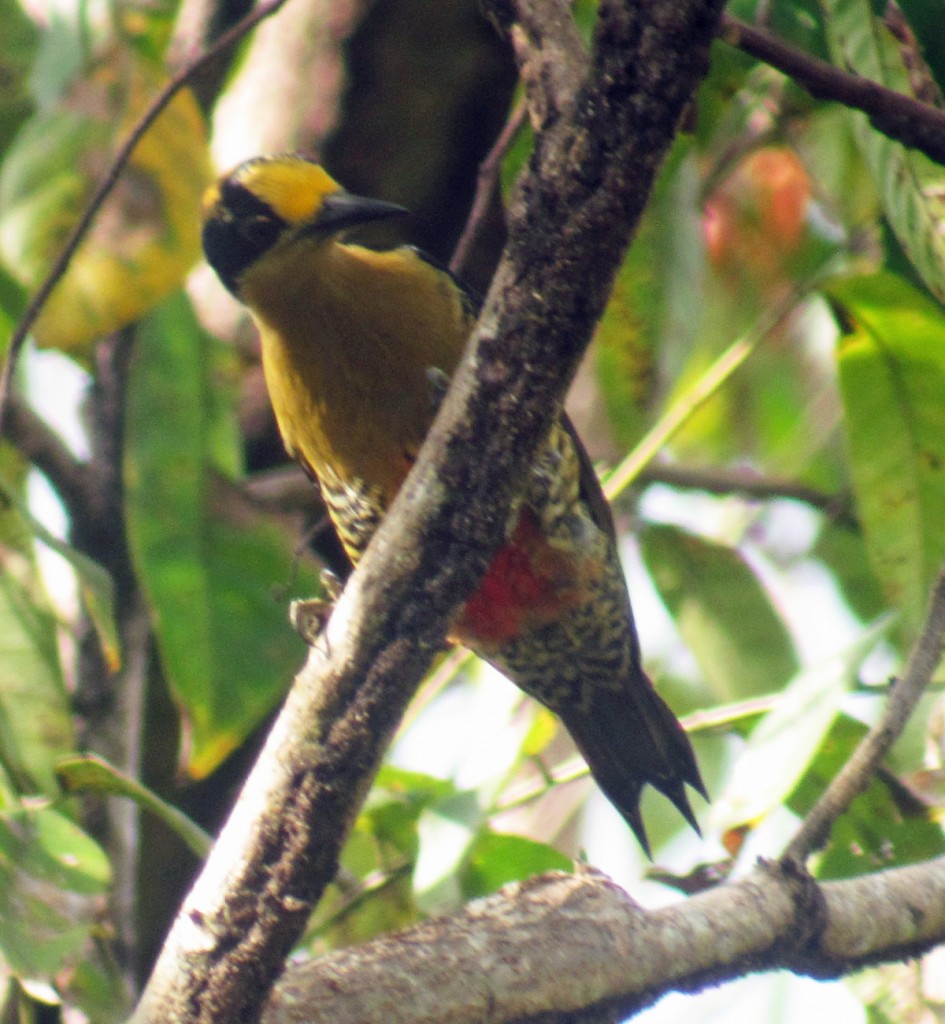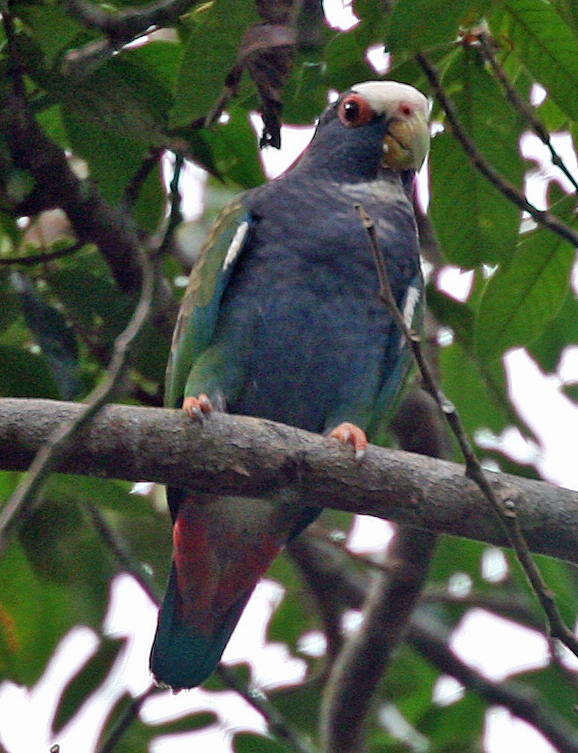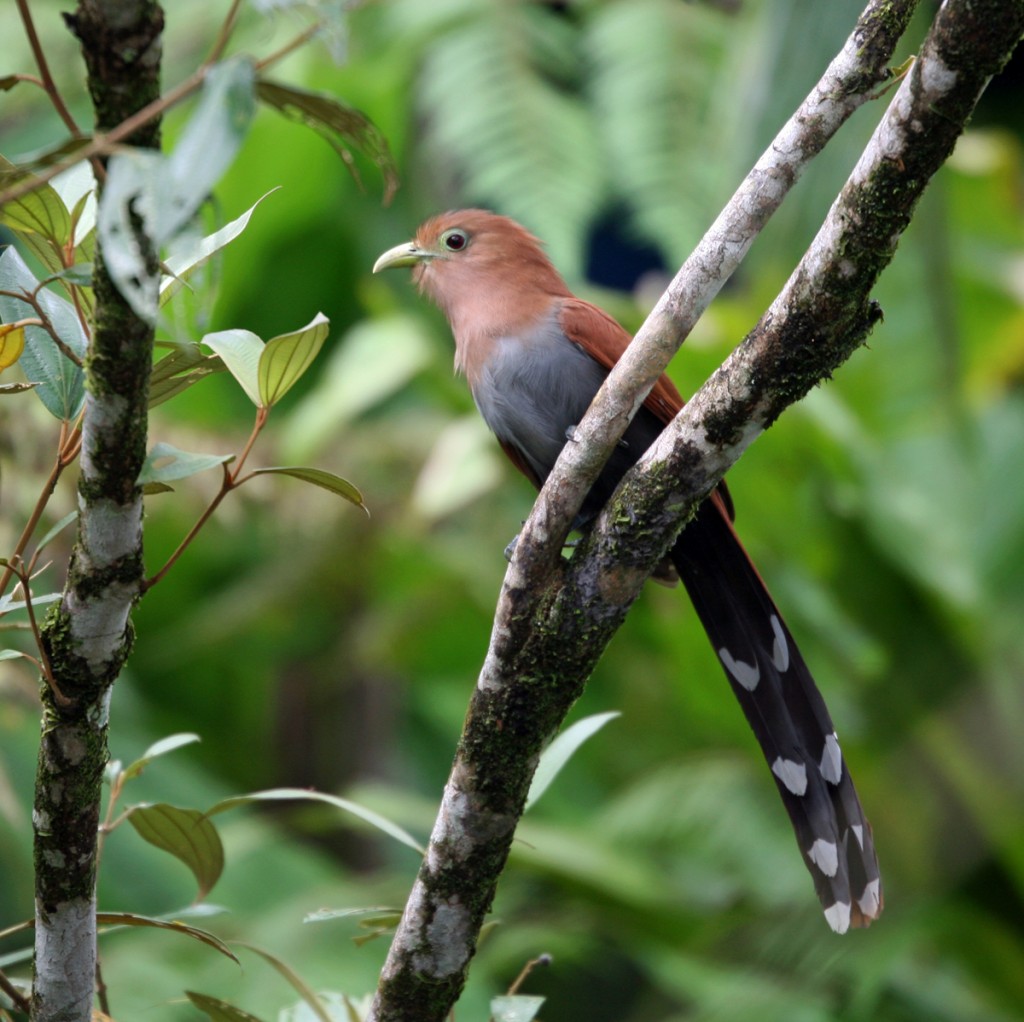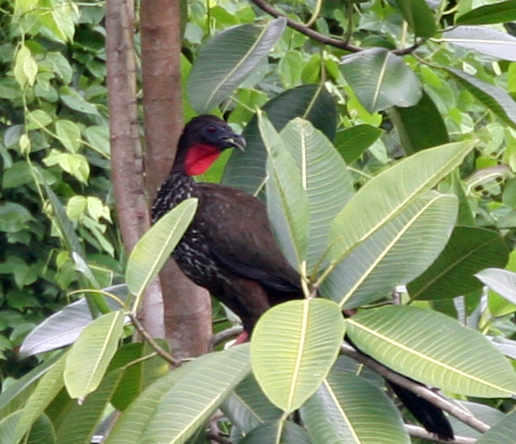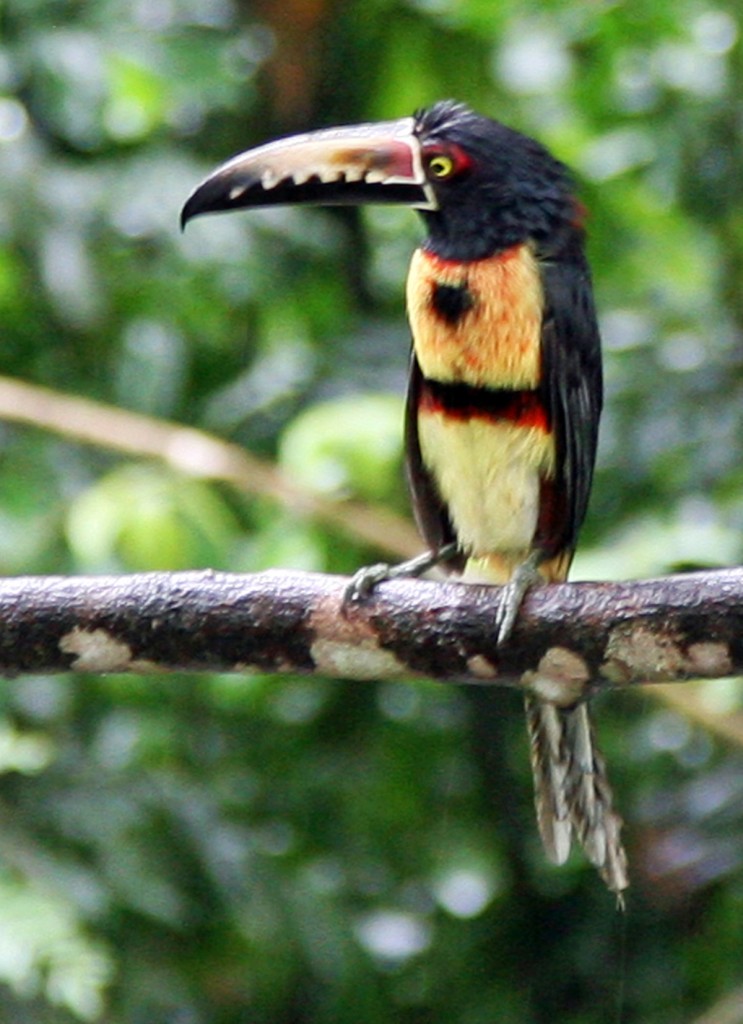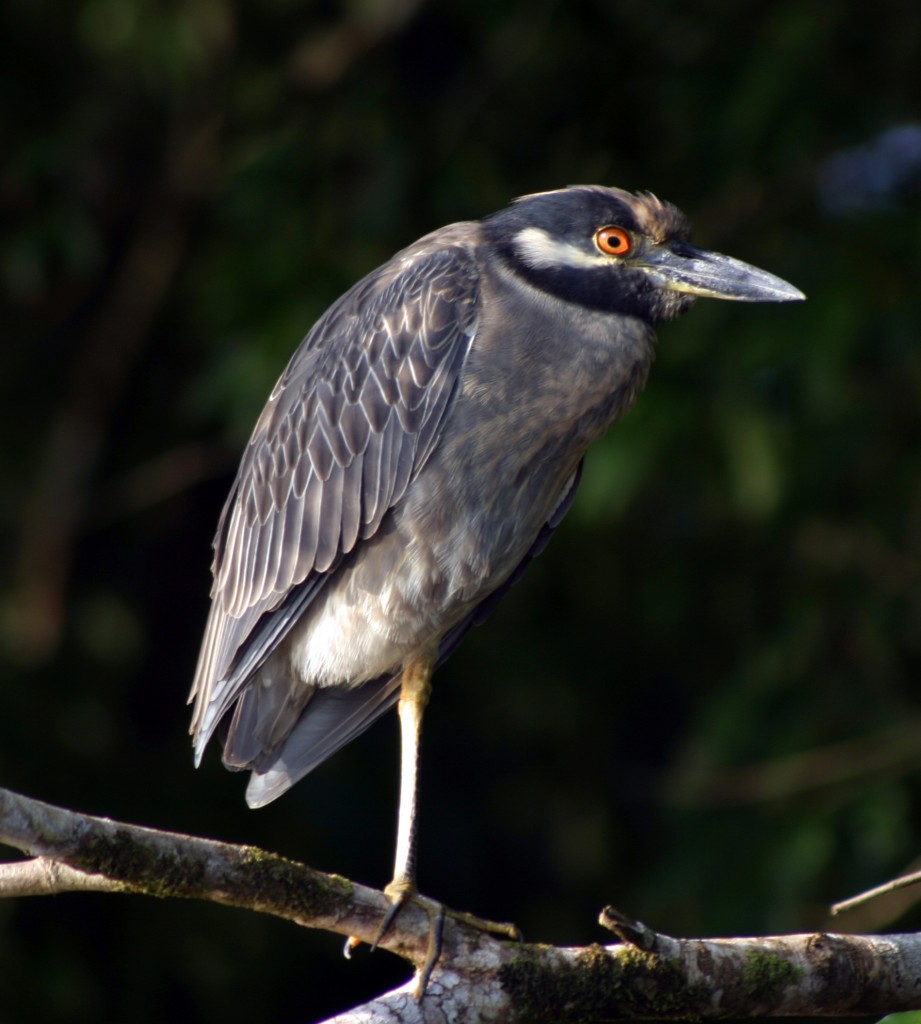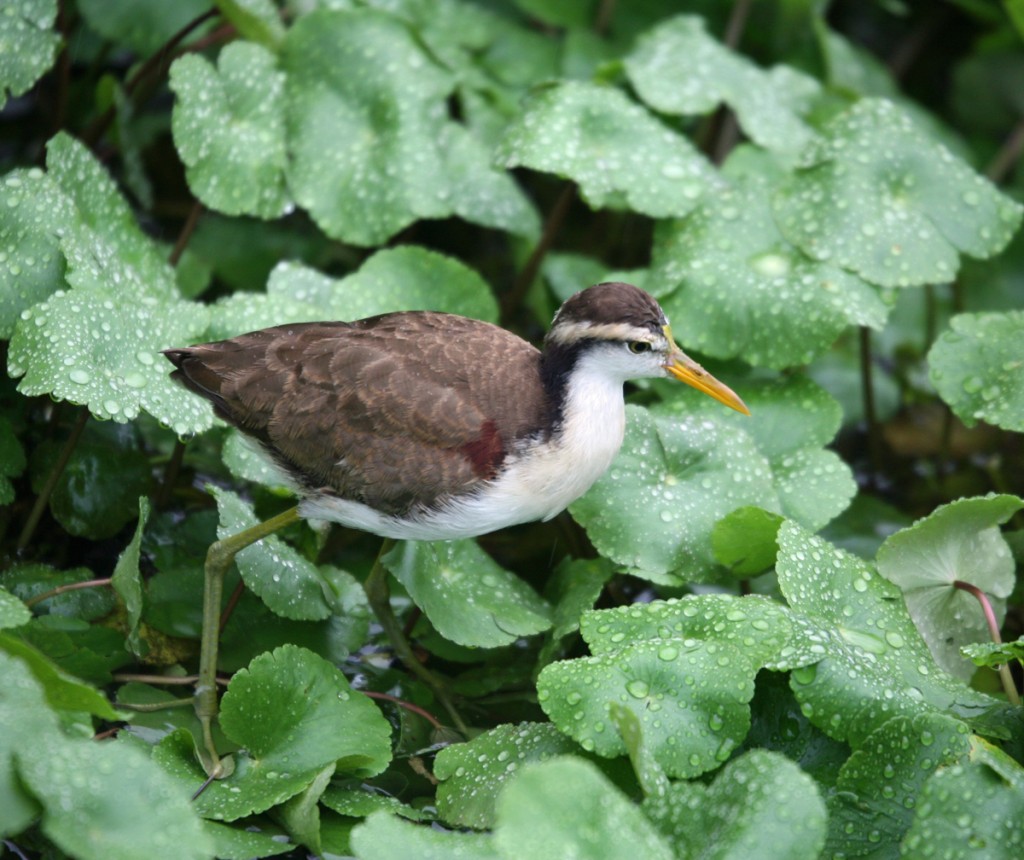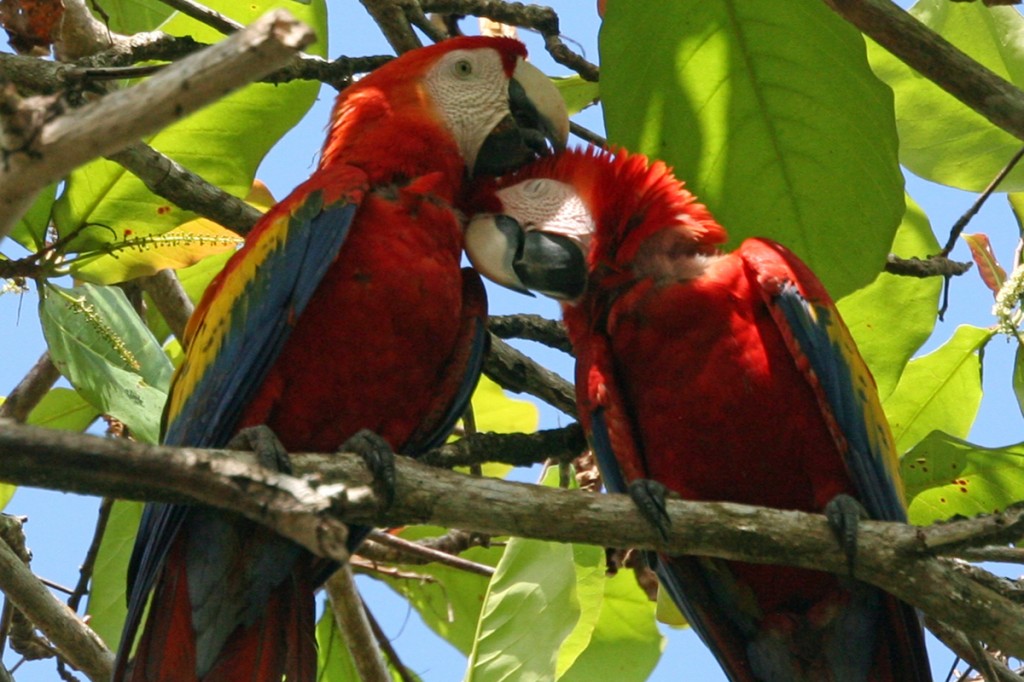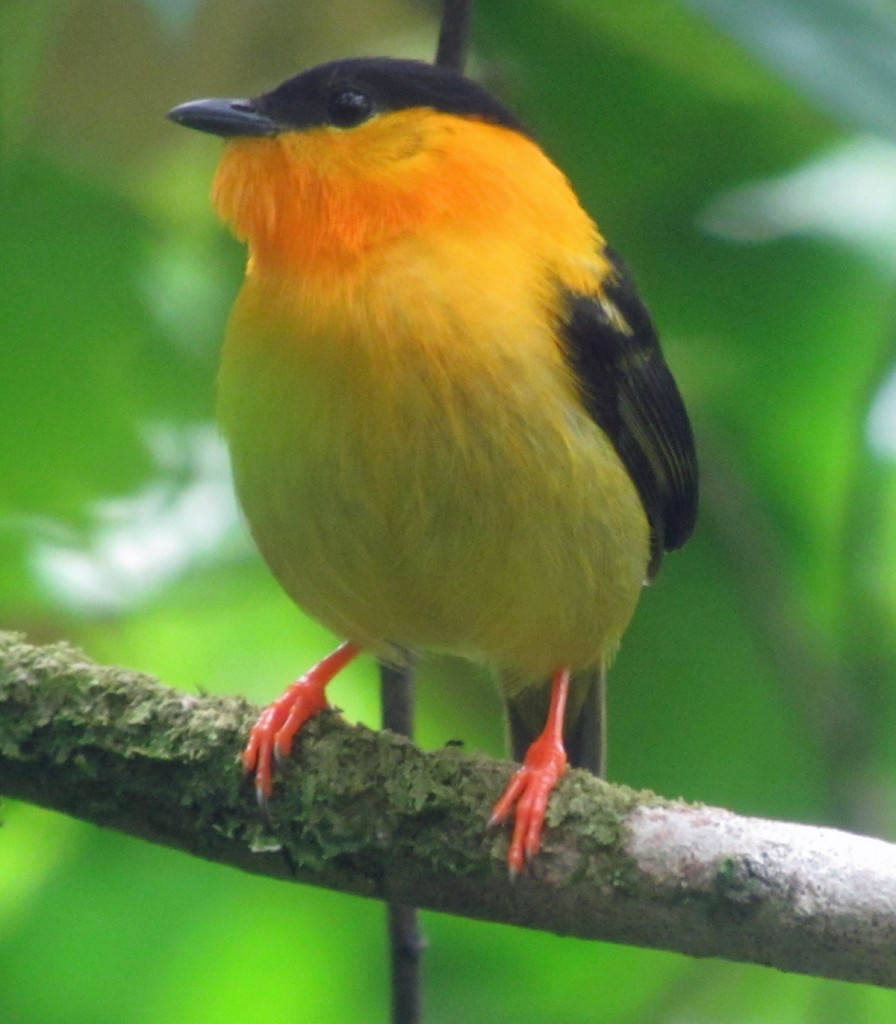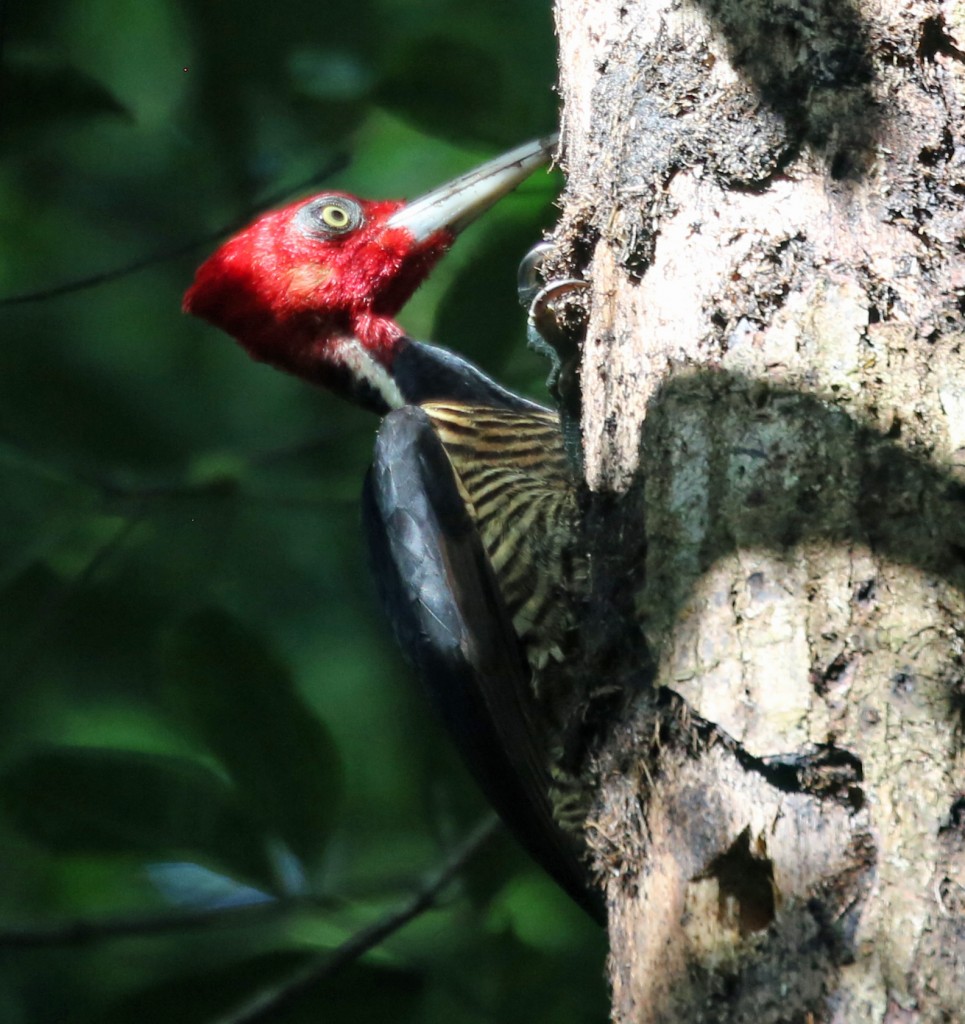
Male Pale-billed Woodpecker
The characteristic double-rap sound made by Pale-billed Woodpeckers (Campephilus guatemalensis) drilling for wood-boring insects is often heard before the birds are seen. While both the males and females of the species have red heads, the females are distinguished by black on their foreheads. Long, stiff tail feathers provide support for Pale-billed Woodpeckers as they hang vertically on tree trunks while hunting bugs. This pair was photographed along the hiking trail between La Tarde and Serena on the Osa Peninsula.
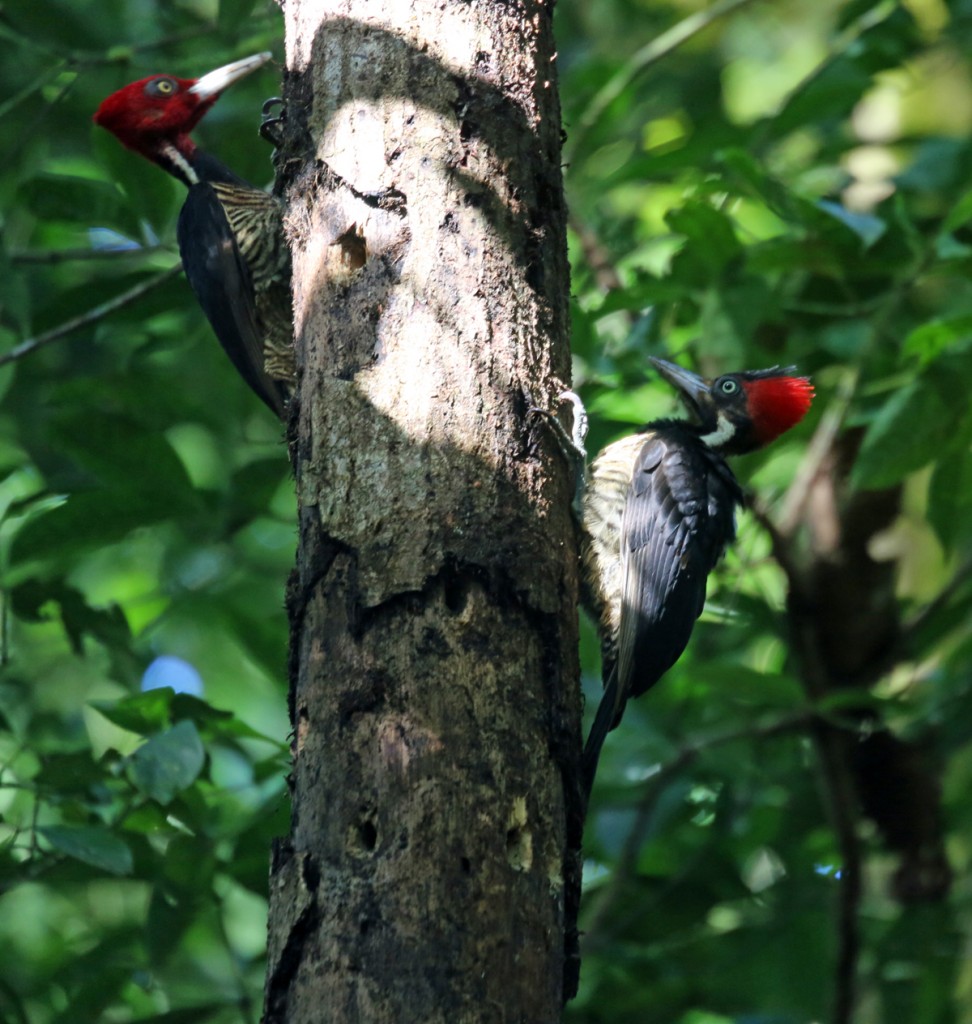
Females of the Pale-billed Woodpecker species have a black forehead, as seen on the bird on the right.
All media is copyright costaricawildlife.net, 2013.
